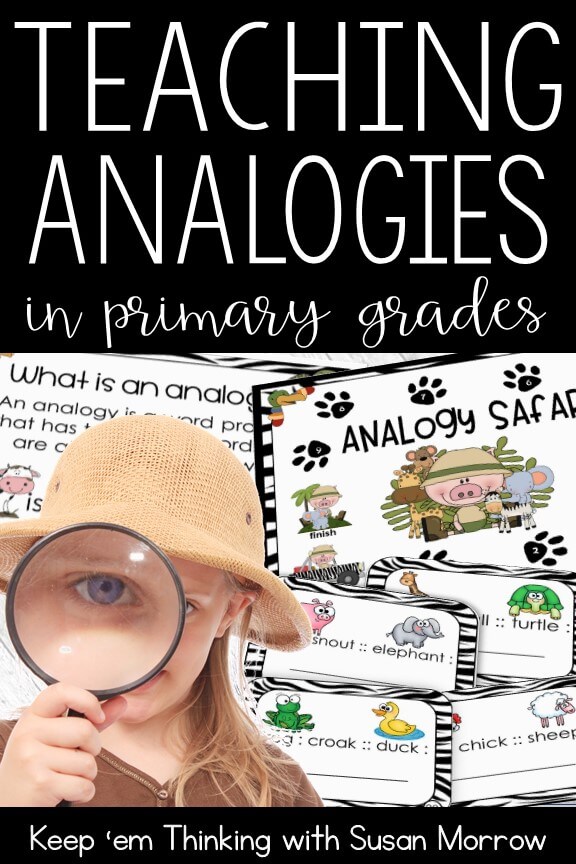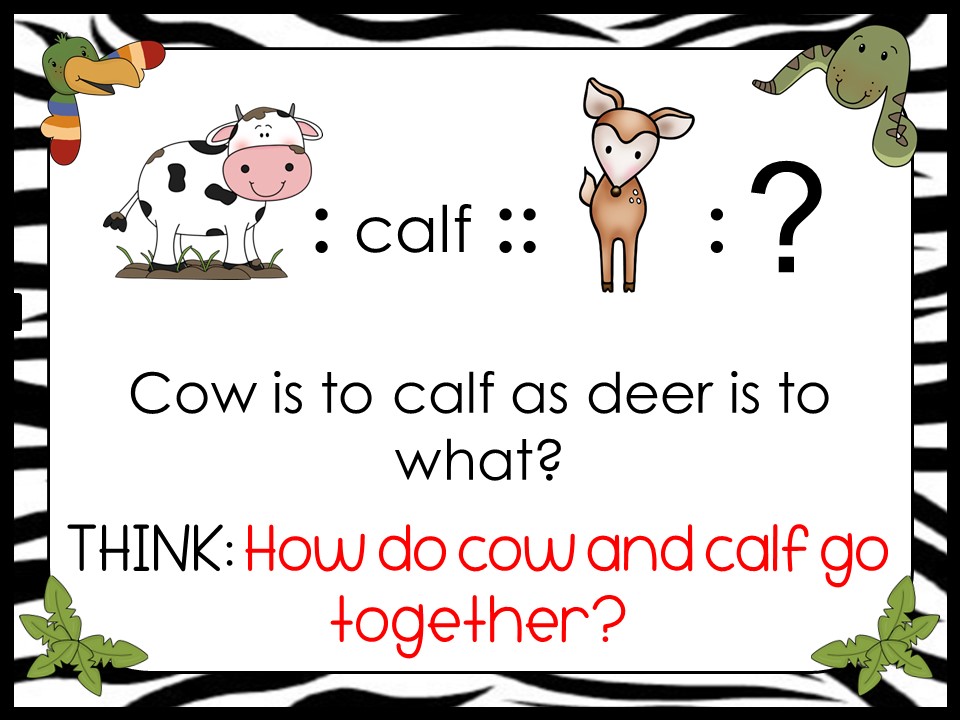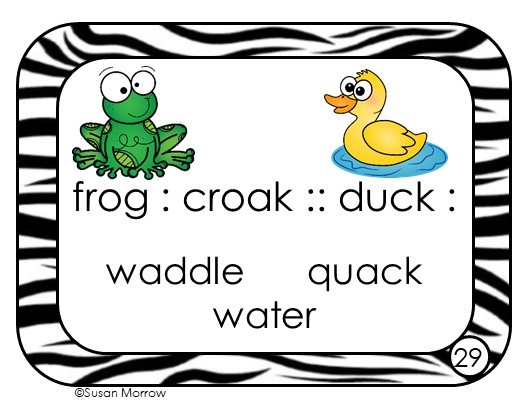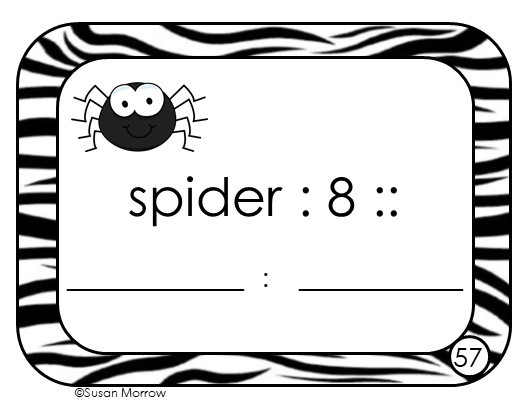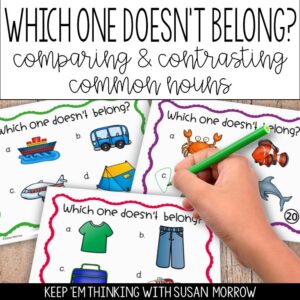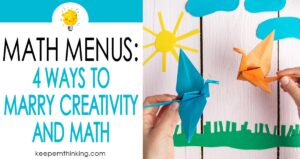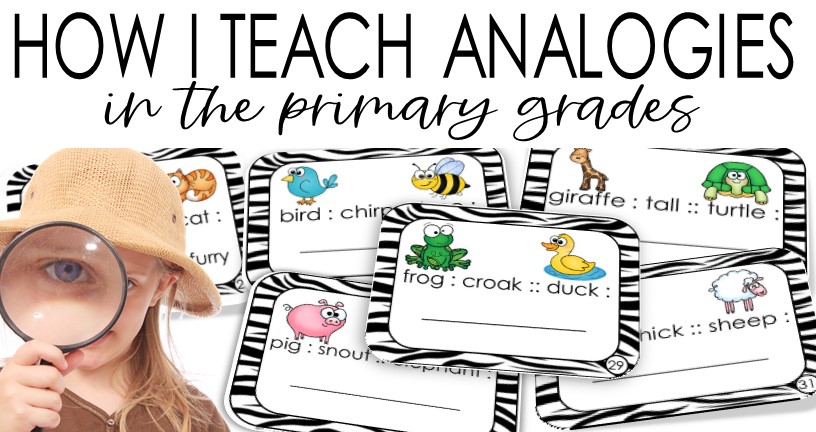
Why should we teach analogies?
An analogy is simply a comparison of two things that are usually thought of as being different, but are similar in some way. They are written in a specific format such as apple : fruit :: carrot : vegetable. It reads: apple is to fruit as carrot is to vegetable. Teaching analogies helps students understand these comparisons.
I have been teaching analogies to elementary students for years, so I felt validated when I read the research about teaching analogies. In Marzano, Pollock, and Pickering’s book Classroom Instruction That Works, the authors write about 9 instructional strategies that have the greatest effect on student achievement. Similarities and Differences is one of those strategies. When you teach analogies, your students are making comparisons. At the lowest level, these comparisons may be simple sorting activities. But at the highest level, similarities and differences include analogies which is basically reasoning by comparison.
Benefits of Teaching Analogies to Elementary Students:
Okay, so understanding analogies increases student achievement. But why? Here are a few reasons:
- help you identify flaws in student thinking – If a student creates an analogy that doesn’t make sense, you can examine it to understand their thinking and correct misconceptions. On the other hand, if they create an analogy that makes sense, they have demonstrated understanding of a concept.
- teaching analogies teaches students to use critical thinking and logic skills
- help students analyze relationships of words and ideas. I like to teach analogies by asking primary students how they go together or what they have in common. Examples of relationships are:
- part to whole
- synonyms
- opposites
- function
- size
- categories
- increase vocabulary
- help students understand nuances of language
- help students prepare for standardized tests
Background skills needed to solve and teach analogies
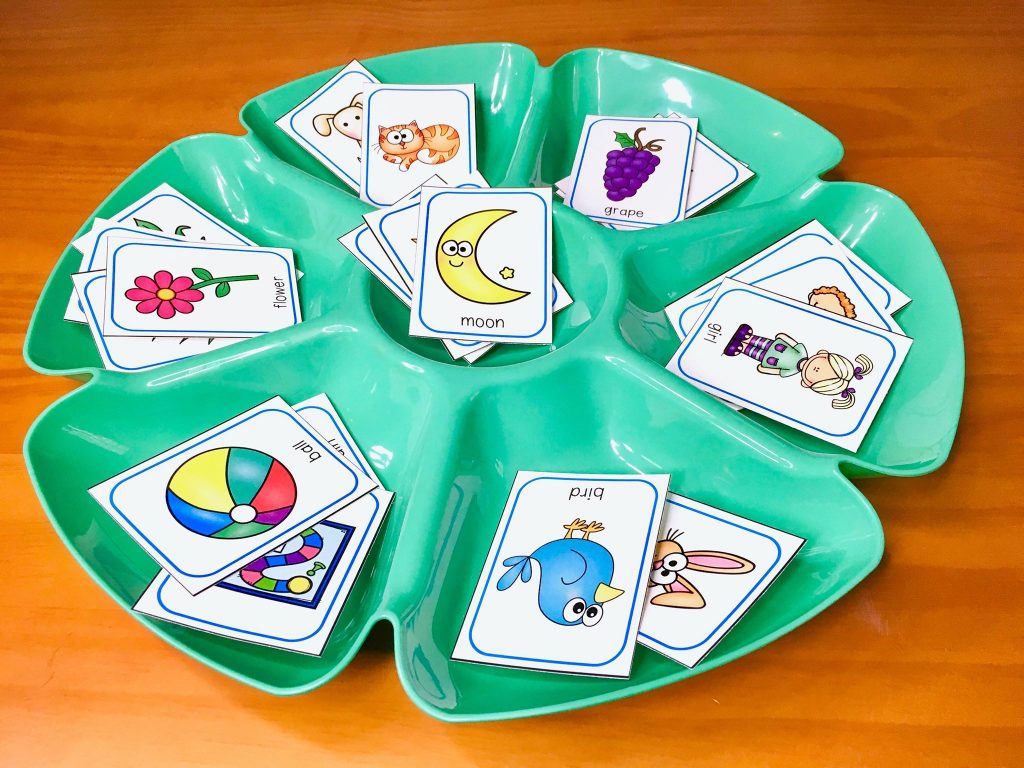
I like to make sure that my students have some experience with sorting activities before I teach analogies. Sorting helps students learn to categorize things by attributes. Attribute listing in one of the pre-requisites to analogies. You may think your primary kiddos can’t do this, but I assure you, they can!
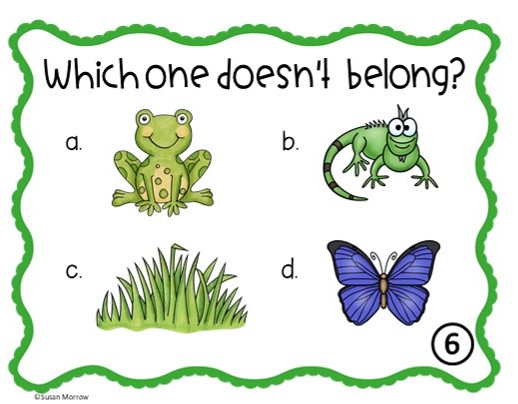
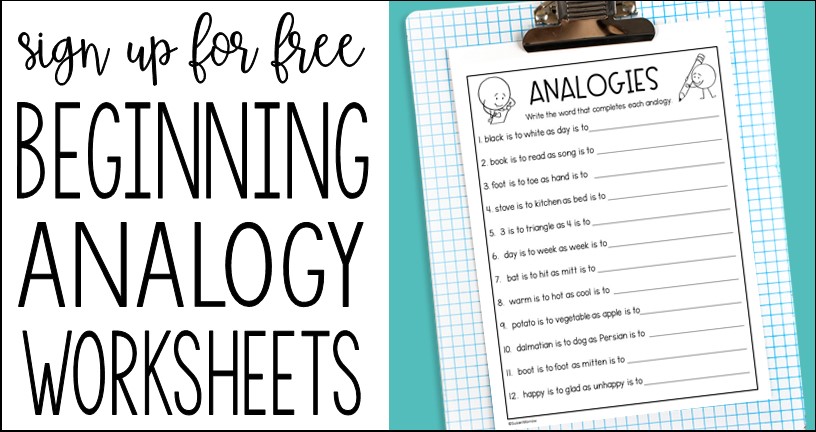
Teaching Analogies to Elementary Students
Teachers should teach analogies as students learn to read. If your students have little experience with classifying and sorting words and objects, you will need to use concrete objects. Have the students tell how they are similar and different. Record their ideas on the board. Next, put them in groups and repeat the activity.
Some easy objects to use are:
- apple and banana
- ball and marble
- cup and glass
- screwdriver and hammers
- shoe and sock
Next, I like teach analogies by showing a PowerPoint so we can solve analogies as a class.
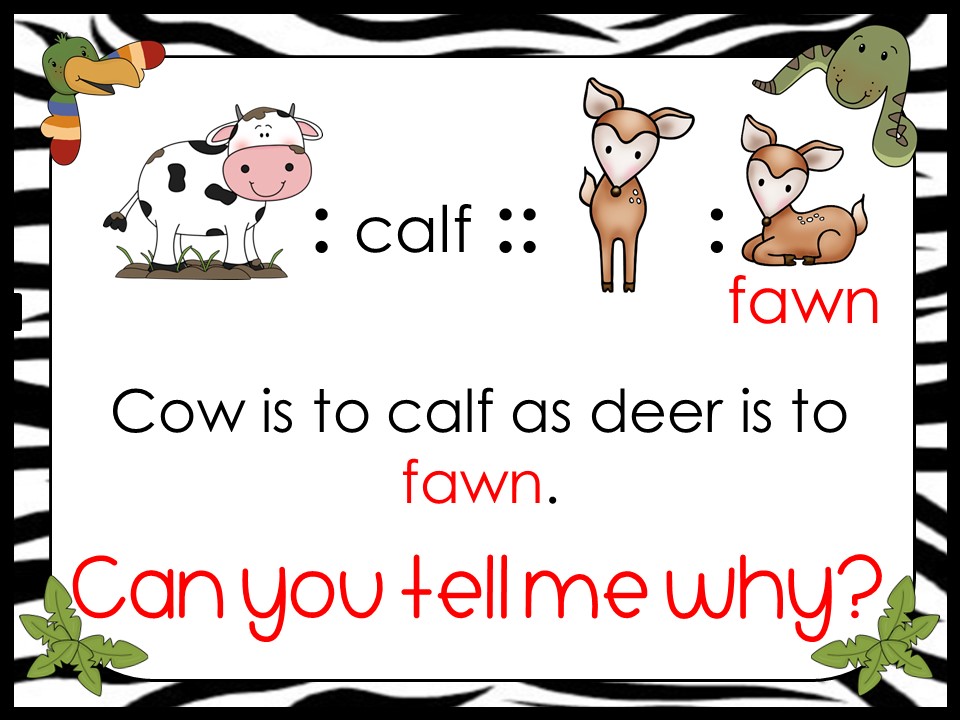
Four Levels of Complexity
To add more complexity, you can have the students finish the analogy. Example: spider is to 8 as _____________ is to ______________.
The highest level I do with students is to have them complete an analogy and then create an analogy that has the same relationship.
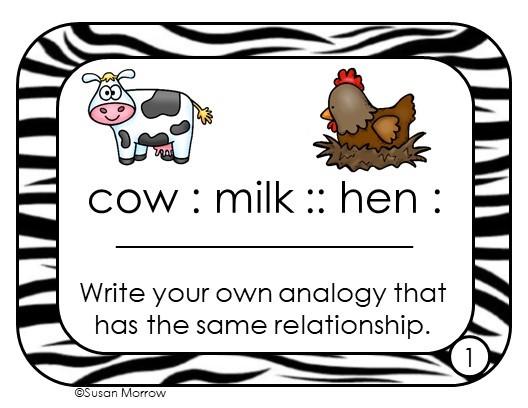
In the example above, we get milk from cows and eggs from hens. So, a new analogy could be sheep is to wool as oyster is to pearl. This is just one example. The kids wouldn’t have to use animals at all. For example, they could say tree is to paper as wheat is to flour because paper comes from trees and flour comes from wheat.
When can you teach analogies?
You can use teach analogies in almost every lesson. They can be used as daily warm-ups, in centers, as a question during a lesson, and as exit tickets.
SHOP THIS POST
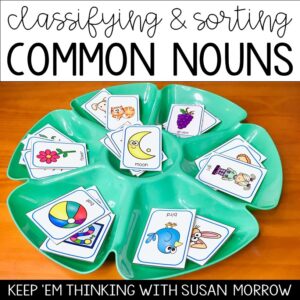

PIN FOR LATER
